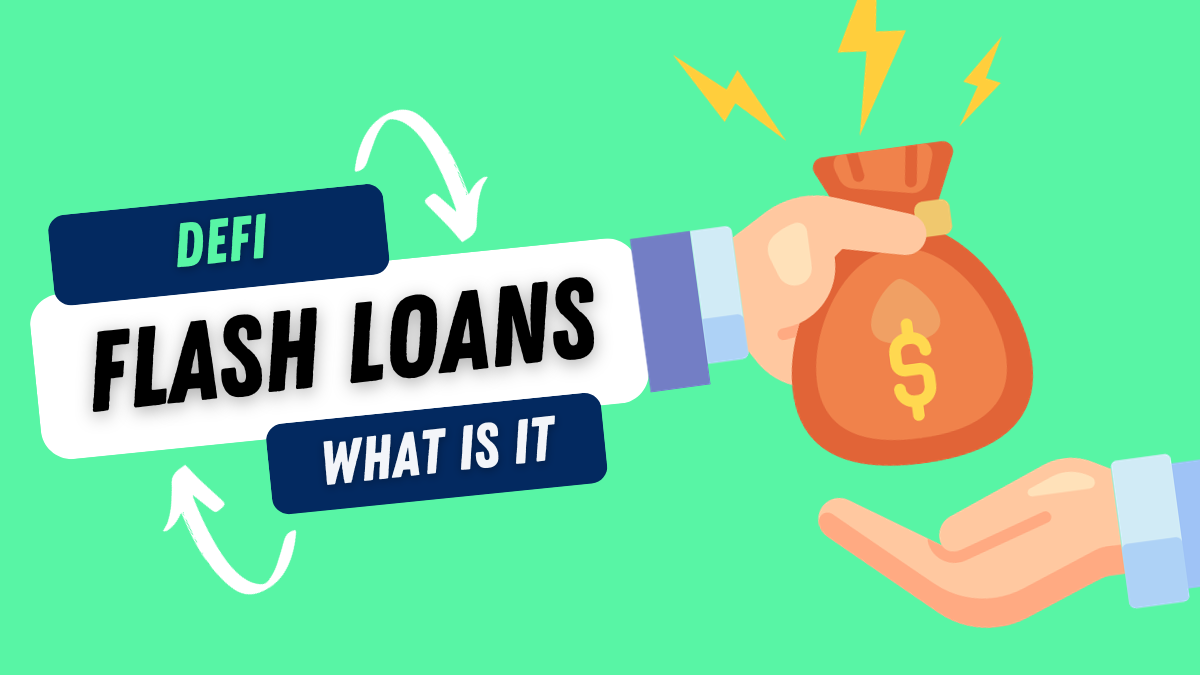If you’ve been keeping an eye on the world of decentralized finance (DeFi), you might have heard about flash loans. These loans have caused quite a stir, making headlines due to their role in exploiting vulnerable DeFi protocols and causing millions in losses.
But they are more than just troublemakers; they represent a groundbreaking tool for innovative finance, enabling opportunities like arbitrage and rapid trading.
So, what exactly are flash loans, and how do they work? In this guide, we’ll delve into the mechanics of these unique financial instruments, all explained in simple terms.
What are flash loans?
To understand it, let’s start with the basics. We’re all familiar with traditional loans where a lender lends money to a borrower, to be paid back later with interest. The lender temporarily parts with their funds, and the borrower repays over time.
Flash loans share similarities with traditional loans but come with some unique properties:
1. Smart contracts: Flash loans rely on smart contracts, a blockchain technology. These smart contracts ensure that funds can’t change hands unless specific conditions are met. In the case of flash loans, the condition is that the borrower must repay the loan within the same transaction. If not, the smart contract reverses the transaction, as if the loan never occurred.
2. Unsecured loan: Unlike traditional loans that often require collateral, flash loans don’t demand any collateral. Instead, borrowers must repay the loan instantly in a specific way.
3. Instant: Regular loans involve a lengthy approval process, and repayments occur over months or years. Flash loans, on the other hand, are lightning-fast. They must be executed within a single transaction, which usually takes only a few seconds. Borrowers need to utilize the borrowed funds for instant trades or other financial operations within this short window.
Use cases of flash loans
These are incredibly handy in certain situations, particularly for traders seeking quick profits from arbitrage opportunities.
Arbitrage involves capitalizing on price differences for the same asset on different exchanges. If, for example, PizzaCoin is priced at $1 on Exchange A and $2 on Exchange B, a flash loan allows a user to buy it on Exchange A and sell it on Exchange B, making a profit. Afterward, the borrower repays the loan and keeps the earnings.
Why use a flash loan?
Using it can potentially yield substantial gains without risking your own capital. Some common use cases include:
1. Arbitrage: Capitalizing on price differences across various exchanges.
2. Collateral Swaps: Quickly changing the collateral supporting your loan.
3. Lower Transaction Fees: Combining multiple transactions into one can reduce fees.
Where to access flash loans
Flash loans are available on various Ethereum-based DeFi lending platforms, such as Aave and dYdX. Initially, they were intended for tech-savvy users familiar with the command line, but more user-friendly interfaces are now emerging.
What if you don’t repay a flash loan?
The entire thing takes place within a single transaction. If either party, the lender or borrower, fails to follow the rules, the loan won’t be issued. Smart contracts ensure that funds won’t move unless all conditions are met. If the borrower doesn’t repay the loan instantly within the transaction, the smart contract simply reverses the transaction, returning the funds to the lender.
The security question
They have faced numerous attacks leading to significant losses, highlighting vulnerabilities in Ethereum and DeFi. Smart contracts can be exploited if they aren’t written perfectly, or if the data flowing into them is corrupted. The technology is evolving, and some believe that these issues will diminish as it matures, while others see them as a persistent challenge.
Flash loan ‘attacks’
Although they are new, have already seen various attacks with different characteristics. For example, a borrower tricked a lender into thinking they had repaid a flash loan fully, when they hadn’t. In another case, flash loans were used to influence a community vote.
In sum, flash loans represent a fascinating and rapidly evolving corner of the DeFi space. They offer both potential for profit and significant risks. As the technology continues to develop, it will be exciting to see how flash loans shape the financial landscape.
In short
These are a unique, lightning-fast financial tool within the DeFi realm. They offer exciting opportunities for traders and investors, especially in the world of arbitrage and quick trades. However, they also come with notable risks, as highlighted by past attacks.
Ethereum and DeFi have pushed the boundaries of traditional finance, allowing users more control and fewer intermediaries. Flash loans, although promising, require caution and thorough research.
As this technology evolves, flash loans may become a more prominent feature of the financial landscape. For now, they represent a dynamic frontier where innovation meets potential pitfalls. To make the most of flash loans, users must stay vigilant, prioritize security, and navigate this ever-changing DeFi landscape with care.
